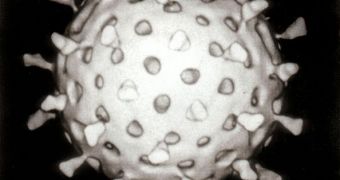A team of investigators announces the development of a new observations method, which allows microbiologists to observe single viral cells within the human body.
The innovation could have tremendous consequences for the field of medicine. In microbiology, knowing which organism you're up against means that half the battle has already been won.
What experts find extremely difficult to do is make the correct diagnosis. Most microorganisms can then be attacked with various chemicals, but researchers first have to identify them.
This is now possible via the new method developed by researchers at the Arizona State University (ASU) Biodesign Institute. The team here was led by research professor Shaopeng Wang.
A detailed version of the conclusions was published in the latest advanced online issue of the esteemed journal Proceedings of the National Academy of Science (PNAS).
In the new research effort, we “have tried to push label-free optical imaging well beyond conventional limits,” Wang says of his team's accomplishments.
The group focused its attention on improving a high-resolution observations technology known as surface plasmon resonance microscopy, which they applied to individual H1N1 influenza virus particles, and to HCMV (Human Herpesvirus 5) virus particles.
This particular method does not rely on using chemical tags attached to the cells that are being observed. “The label may cause a change in the function of the molecule,” says Nongjian Tao.
He is the director of the Biodesign Institute’s Center for Bioelectronics and Biosensors, and he was the supervisor of the recent studies.
The scientist adds that existing labeling methods do not allow for the measurement of intrinsic physical characteristics the viral particles have, such as mass.
According to the ASU team, using SPRM allows them to establish the weight of the invading viral agent, with a precision level of up to one attogram, which is one quadrillionth of a gram.
This level of detail is three to four orders of magnitude higher than the ones any other similar technologies out there today are capable of.
Another amazing feat SPRM is capable off is performing all of these operations in real-time, which allows researchers to study the invader as it develops.

 14 DAY TRIAL //
14 DAY TRIAL //